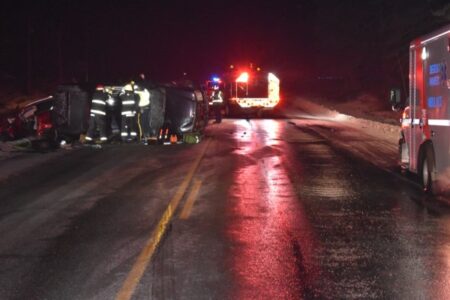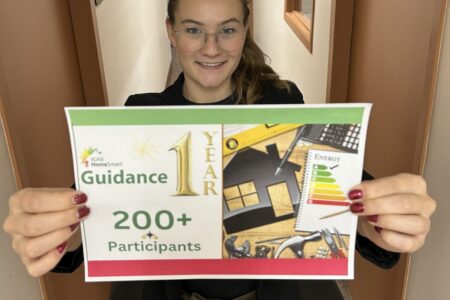Successful petition may prevent bridge project from moving forward
The City of Trail will have a new sewer pipeline crossing the Columbia River, but it will be up to the citizens of Trail whether or not there will be a pedestrian/bicycle bridge as well.
Councillor Robert Cacchioni is chair of the Sewerage Committee and represents Trail on the board of the Regional District.
Currently, according to Cacchioni, all the sewage from Rossland, Warfield, Teck and Trail goes to the Murray Creek pumping station, which resides right by the old bridge in West Trail. It is then pumped through a sewer pipeline, which runs underneath the old bridge, to East Trail. Then it all goes to the sewage treatment plant in Waneta.
“The old bridge now has been de-commissioned… an engineering report says it’s not effective now for vehicle or walking traffic,” said Cacchioni.
“There’s a way to save the old bridge but it would be, probably, millions and millions and millions of dollars… the old bridge option [for the new sewer pipeline] has never been on the table,” said Cacchioni.
The pipeline underneath the old bridge cannot be salvaged during the eventual demolition of the old bridge, therefor a new sewer pipeline needs to be built to cross the river, he explained.
“This pipeline, it has been proposed for more than two-and-a-half years. It’s not something new,” Cacchioni said.
Norman Gabana, now retired, was a City of Trail councillor for 22 years and is now lobbying for a referendum on the pipeline issue.
“I don’t say I don’t support the sewer pipeline project. I don’t think we’ve explored alternatives,” Gabana said.
“I was a metal fabricator by trade. I was chairman of the Public Works Committee when the original pipeline and the sewer treatment plant were built… I am very familiar with the city’s infrastructure,” said Gabana.
“The [sewer route] I prefer is the one right over the back of the river wall. It would come along the wall and go over the new bridge to East Trail,” Gabana said.
“I have had an engineer with a doctorate look at it. Of all the choices, he said the river wall would be first choice,” Gabana said. He would not name the engineer.
Cacchioni said, “We certainly wouldn’t want the pipeline on the river wall because if something happened to the river wall then we would be liable, not only the Regional District but the City of Trail would be liable. We’ve had problems with the river wall; we’ve had to stabilize it. Then if there was a leak, you’d have a kilometre of pipe capable of leaking into the Columbia.”
“We’ve looked at a number of options,” Cacchioni said.
Putting the sewer pipeline in the river, under the river, under Bay Avenue and under the esplanade have all been ruled out. Putting the sewer pipeline along the river wall has also been ruled out.
“To pipe it all the way back from Murray Creek [pumping station at old bridge] to the new bridge and back down, you’d either have to lay it on the river wall, and that would require permitting, or you’d have to dig up all of Bay Avenue or you’d have to dig up the esplanade. You’d need a booster station because you’re looking at a longer distance to get it back around. If you need a booster station you’d add another $700, 000,” said Cacchioni.
“We never really looked at that option until Mr. Gabana brought it up, but we did spend money to look at it and the engineers tell us that it’s not a reasonable option for cost and liability,” said Cacchioni.
The new sewer pipe will go up “pretty much by where the old bridge is now,” said Cacchioni, adding no ground will have to be torn up, and the new sewer pipeline will follow the same path it always has. Two towers will need to be built on each side of the river to support the pipeline.
“Right now this is the preferred option by the Regional District,” said Cacchioni, pointing out the price isn’t definite yet, but it is estimated to cost $ 4.5 million.
He also said the pipeline might not be the only thing built across the river.
Above the pipeline there could be, “a walking part with a bike path and a waterline and a fibre-optic line. It would add not only to the City of Trail, but the whole community would use it. It would be part of healthy living,” said Cacchioni.
The walking-bridge part of the project would allow access to the sewer line. “You would have access to it and be able to repair that line if there was problems,” said Cacchioni.
This part of the project would cost $4.9 million.
“This money is not going to increase taxes one cent,” said Cacchioni.
“The money is coming from federal government gas tax, which is designed for improvements to infrastructure and upgrading facilities like sewer plants and water lines. The money is designed to assist communities to do capital improvements to make things better for the whole economy and environment,” said Cacchioni.
Gabana said, “Council is saying it’s not going to cost the taxpayers anything because it’s going to be paid by a federal program. That is a federal program that presently expires before the retirement date of the debt. And if the federal government changes that program we could be subject to $400,000 debt a year for the pipeline…I don’t think there’s any way the council can say it will never cost the City of Trail taxpayers a cent.”
“Construction has to start this fall,” Cacchioni said.
Whether or not there will be a walking bridge, bike path, waterline and fibre-optics line is up to the citizens of Trail, and a petition has been brought forth to prevent the current plan.
Gabana said, “Ron Joseph was the one who started the petition.”
The petition grew to 1,206 signatures, according to Gabana.
“The acceptance [of the petition] was absolutely incredible,” said Gabana. “We went out one night and got 52 signatures and not one person didn’t want to sign. The bitterness towards council was incredible. I’m really sad to see that.”
“A lot of people really want council to explore what it would cost to fix the old bridge,” Gabana said. “If the old bridge could be salvaged, they could leave the sewer line on it.”
“The petition asked for a vote by the citizens, and for council to explain the costs,” said Gabana.
Cacchioni said,“They needed 574 people to sign … they got 1,200 people. The counter petition has stopped the city from being able to partner with the Regional District on this major project. Now we go to referendum and it will be up to the people to choose.”
The people will only get to vote on whether or not they want the walking bridge across the river. The sewer pipeline, which was not petitioned, will proceed as planned.
Rossland and Warfield’s councils still have to vote on the issue as well.
Cacchioni said, “[The walking bridge] is going to be a benefit for the entire valley. It’s going to be a connection to Tail and a loop that people were used to walking before. It’s going to be a tourist attraction.
“You can’t add the walking part after, if you just start on the sewer pipe,” said Cacchioni.
“This is an opportunity for the City of Trail to partner with other governments, in terms of Warfield, Rossland and the Regional District, to provide something more than just a sewer pipe across the river, and this opportunity is going to be missed, if we can’t get this through at this time,” Cacchioni said.
There is more information, including two press releases on The City of Trail’s website. A statement from Mayor Bogs was posted on the website as well:
“If citizens have questions regarding the future pipeline/pedestrian bridge, they are encouraged to contact the City’s Engineering Department at 250-364-0807. If individuals have questions about the petition that they may have signed under false pretenses or want their name removed from it, they should contact the City’s Corporate Administrator at 250-364-0800.”
“On April 3 and April 8, the City of Trail advertised its intent adopt a Loan Authorization Bylaw to borrow $4,916,000 over a 25-year term in order to construct, as a joint venture with the RDKB, a pipe/pedestrian bridge crossing the Columbia River.
“Moving and running the sewer interceptor over the new bridge is also not a feasible option; engineering studies have already ruled this out as a non-cost-effective solution.”























Comments